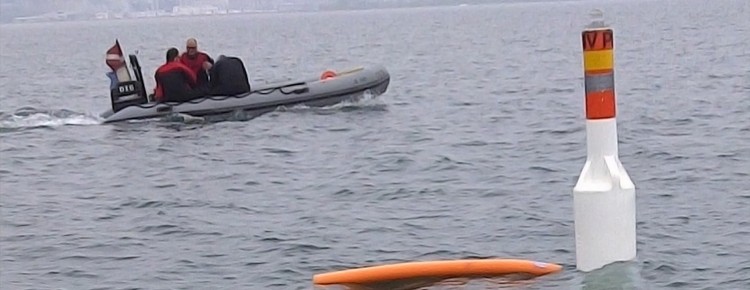Save Ontario Shipwrecks (SOS) is an organization that is dedicated to protecting, preserving and promoting Ontario’s underwater cultural heritage. Not limited to simply shipwrecks, the organization also protects and preserves heritage sites such as submerged towns, cities and first nations’ aboriginal settlements.
Raimund Krob, SOS’s provincial mooring program coordinator said, “It’s pretty cool. It’s the closest thing to time travel that many will ever experience. When we moor a shipwreck and the Go Deep buoy goes up on that, we inform Transport Canada and Coast Guard. That notification goes out to all mariners and all commercial shipping throughout the Great Lakes. The last thing you want is a 10,000 pound anchor being lowered on top of an historic shipwreck from the 1800s.”
The mooring program delivered by SOS is arguably their most visible. Go Deep buoys are moored alongside wrecks and historically significant points of interest to alert divers, fishermen and commercial vessels to the fact that they exist. They serve as both a warning and a way of sharing information about the specific dive site.
Mr. Krob explained that SOS promotes their new mooring buoys in a few ways. “One is through our SOS website where we populate our moored shipwreck directory with a map so that folks can see. We also post on the Underwater Ontario Council. We push a link to them and they promote it on their dive site directory. There is a couple of diving social media sites that we push that to as well. So now what happens is after we do that mooring, the local, provincial, national and international scuba diving community realizes ‘Hey! There’s a new dive site in Ontario’.”
The Superior Chapter of SOS recently deployed 5 Go Deep mooring buoys as part of a joint federal, provincial and local Thunder Bay initiative to drive scuba diving related tourism to that area. Mr. Krob explains that in order to maintain the site as attractive to divers, special precautions have to be taken when placing the mooring block.
“The mooring block is an 8000 pound block of concrete and we place that block within 50 feet of the shipwreck. We have a variety of means of doing that. Sometimes we get help from the Coast Guard, local charter operators or from municipalities. That’s what I call, no pun intended, heavy lifting.”
Mr. Krob continued, “That’s the first step. There’s obviously quite a bit of effort that goes around determining where the best place is for it. The last thing you want to have is a beautiful engraved wooden bowsprit from the 1800s and then place a big concrete block in front of it. Typically when you place the block, you place it some place that’s close to the shipwreck but won’t impact underwater photography, videography or the enjoyment of the site.”
Locating underwater wrecks and points of interest wasn’t always done with the greatest of care. In years past, more intrusive methods were imposed when searching for a site. “They would drag the bottom to see if they could snag the shipwreck. That’s the equivalent of taking a hot air balloon above the Royal Ontario Museum, throwing a 60 pound weight over the edge of the balloon, and having it crash through the sky light in the hopes that you can snag the King Tut museum exhibit and then lower yourself down on it. It’s not the best of ways.”
Between 5000 and 7000 wrecks are estimated to be in the waters bordered by Ontario. Mr. Krob explains that some of those sites aren’t shipwrecks at all. “Some of the non-shipwreck sites include some of the lost and sunken villages. That’s in the Saint Lawrence Seaway where back when they were rebuilding the Seaway, they had to relocate a bunch of towns. The Seaway, as they built dams and so on, would flood the land where the towns were so they had to relocate them. So now you’ve got underwater buildings and roads. A very fascinating historical trip back in time.”
Protecting, promoting and preserving those sites is the mission of SOS. If you would like to get involved with their organization and advance their mission or would like more information on their mooring buoy program, you can reach Raimund Krob at buoys@saveontarioshipwrecks.ca.
